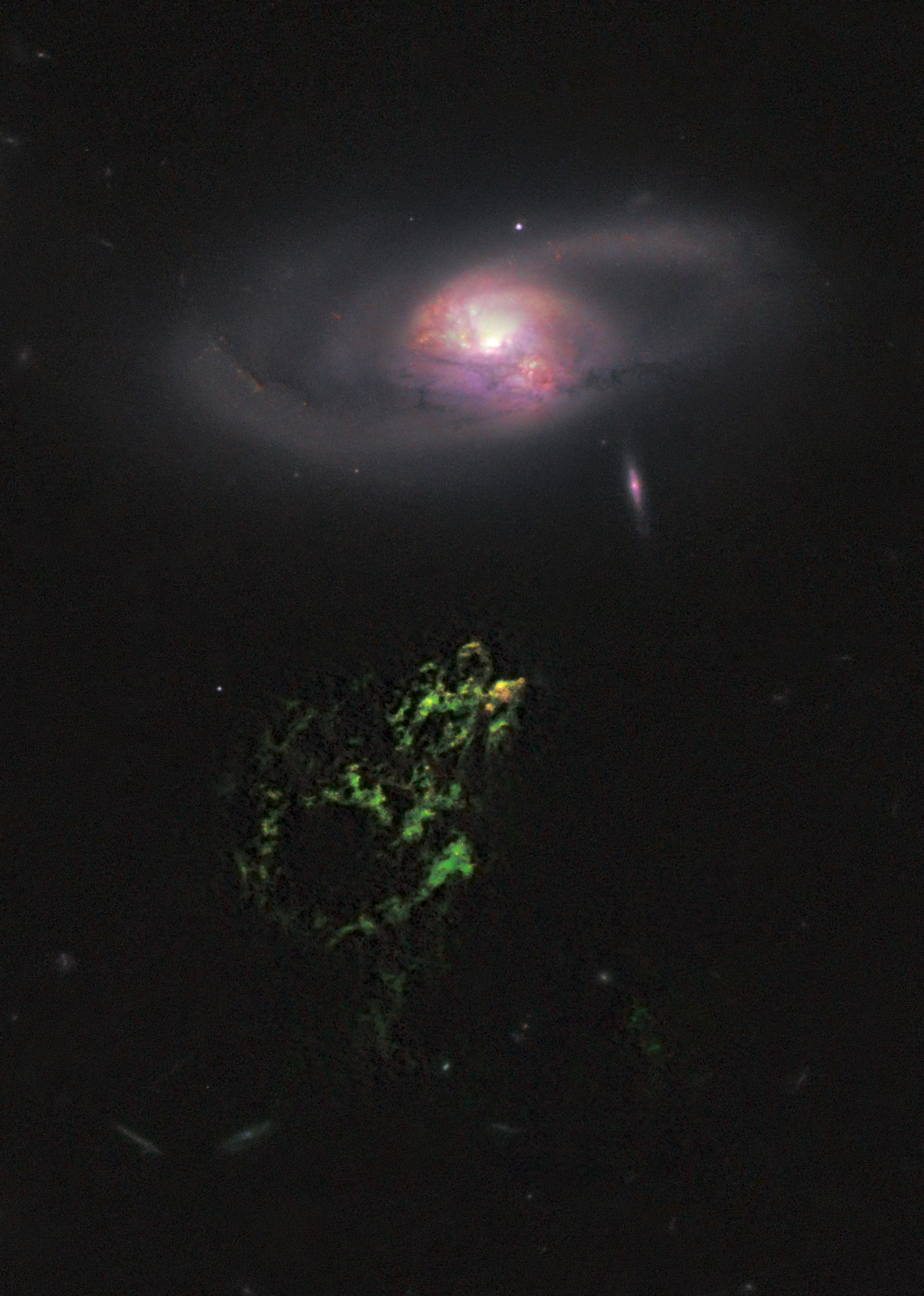Hanny's Voorwerp (Hanny's Object in Dutch) is a mysterious, glowing green blob of gas is floating in space near a spiral galaxy - the size of the Milky Way.
Hanny's Voorwerp (Hanny's Object in Dutch) is named after Hanny van Arkel, the Dutch schoolteacher who discovered the ghostly structure in 2007 while participating in the online citizen science project Galaxy Zoo. Galaxy Zoo enlists the public to help classify more than a million galaxies catalogued in the Sloan Digital Sky Survey. The project has also expanded to include Galaxy Zoo: Hubble, in which the public is asked to assess tens of thousands of galaxies in deep imagery from the Hubble Space Telescope.

CLICK IMAGE TO ENLARGE. An explanation of the formation of Hanny’s Voorwerp. Astronomers believe that it is part of the long streamer of gas that extends from galaxy IC 2497, lit up brightly by the searchlight beam of a recently extinguished quasar. Credit: NASA, ESA
In the sharpest view yet of Hanny's Voorwerp, Hubble's Wide Field Camera 3 and Advanced Camera for Surveys have uncovered star birth in a region of the green object that faces the spiral galaxy IC 2497, located about 650 million light-years from Earth. Radio observations have shown an outflow of gas arising from the galaxy's core. The new Hubble images reveal that the galaxy's gas is interacting with a small region of Hanny's Voorwerp, which is collapsing and forming stars. The youngest stars are a couple of million years old.
The greenish Voorwerp is visible because a searchlight beam of light from the galaxy's core has illuminated it. This beam came from a quasar — a bright, energetic object that is powered by a black hole. The quasar is thought to have turned off less than 200 000 years ago.
Astronomer Bill Keel of the University of Alabama in Tuscaloosa, USA, leader of the Hubble study, is presenting his results on this object today at the American Astronomical Society meeting in Seattle, USA. Read more about his preliminary findings in the NASA news release linked below.

Hanny’s Voorwerp is the only visible part of a streamer of gas stretching 300 000 light-years around the galaxy, called IC 2497. The greenish Voorwerp is visible because a searchlight beam of light from the galaxy’s core has illuminated it. This beam came from a quasar, a bright, energetic object that is powered by a black hole. The quasar may have turned off in the last 200 000 years. This Hubble view uncovers a pocket of star clusters, the yellowish-orange area at the tip of Hanny’s Voorwerp. The star clusters are confined to an area that is a few thousand light-years wide. The youngest stars are a couple of million years old. The Voorwerp is the size of the Milky Way, and its bright green colour is from glowing oxygen. The image was made by combining data from the Advanced Camera for Surveys (ACS) and the Wide Field Camera 3 (WFC3) onboard Hubble, with data from the WIYN telescope at Kitt Peak, Arizona, USA. The ACS exposures were taken 12 April 2010; the WFC3 data, 4 April 2010. Credit:NASA, ESA, William Keel (University of Alabama, Tuscaloosa), and the Galaxy Zoo team






Comments